The cornerstone of the Main Building of The School of the Evangelists was laid and dedicated.

Ashley and Emma Johnson cast the original vision for Johnson University and laid the foundation of faith, prayer, and work. Through their tireless effort, the Johnsons established a school dedicated to being “open day and night to the poor young man, who desires above every other desire to preach the Gospel of Christ.” Rooted in their strong belief in ministry preparation, biblical education, and educational access for the poor, the Johnsons raised funds, recruited students, and developed a curriculum that ensured the early success of the institution.
Ashley S. Johnson was born in 1857 in Knox County, Tennessee. Although he came from humble beginnings, he worked diligently to receive a formal education. After experiencing a conversion to Christ at age 20, Ashley focused his efforts fully on evangelism, preaching, teaching, and writing. In 1884, he met and married Emma Elizabeth Strawn, who was born in 1863 in Ontario, Canada. The Johnsons were co-laborers, full and equal partners in the work of the school, and the first and second presidents. Upon her appointment, Emma Johnson became the first female president of an all-male institution of higher education in the United States.
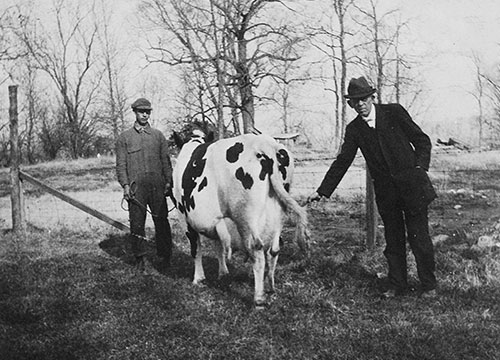

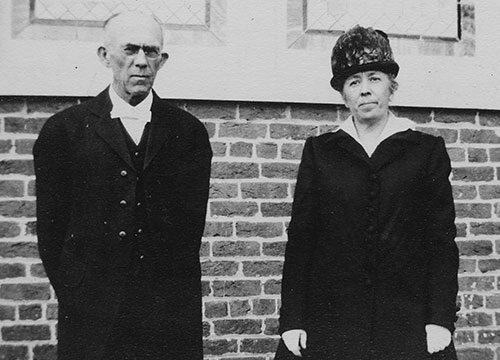
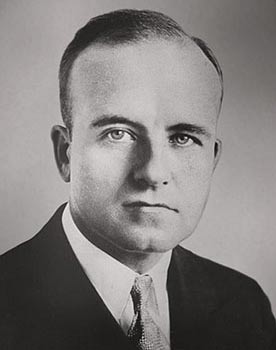
T he Johnsons, whose only child died as an infant in 1891, spoke affectionately of Alva Ross Brown, often addressing him as “our dear son, Alva.” While he worked as an assistant to the Johnsons, it soon appeared that this young “son in the faith” was being groomed for future leadership in the college. Brown assumed the presidency at age 22, having completed his M.A. from the University of Michigan the same day Mrs. Johnson passed away. A highly intelligent young man from Pennsylvania who graduated early from both high school and Johnson Bible College (Class of 1926), Brown proved to be a capable administrator and leader despite misgivings about his age and inexperience from some alumni, trustees, faculty, and students.
President Brown married Alma Childress in 1929, and they had two children, Robert (“Bobby”) and Emma Elizabeth (“Betty”). Alma was an accomplished poet and writer. She was loved on campus for her spirit of hospitality and creativity.
Brown won the support of the larger Johnson community, and throughout his tenure he raised the college’s academic standards by recruiting well-educated faculty and redesigning the curriculum. His leadership helped preserve the work of the college through the financial crisis of the Great Depression.
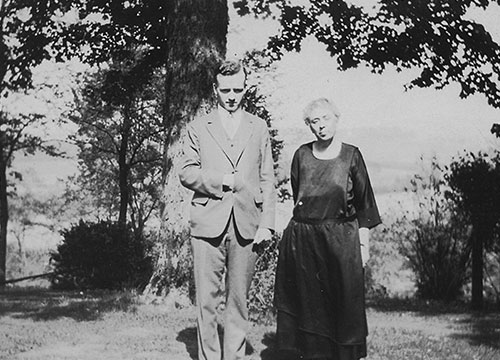

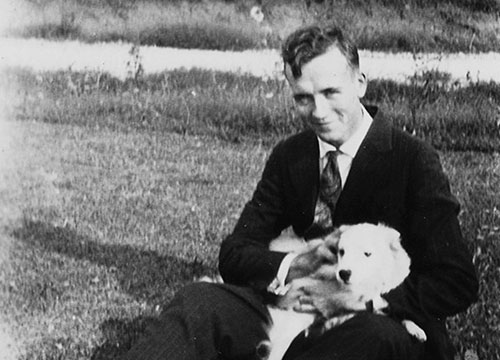
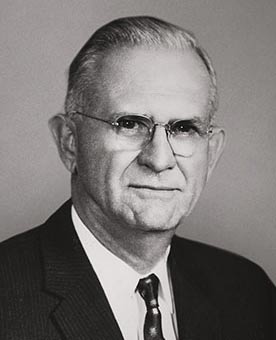
Raised by his grandmother in rural Georgia, Robert M. Bell was the quintessential example of the “poor young man” that the Johnsons envisioned when they began their school. Although he only completed the fourth grade during his childhood, Bell would eventually return to school as a 19-year-old fueled by the desire to prepare for ministry. He completed the remaining grades in six months, then attended Johnson Bible College (Class of 1918) and later received an M.A. in Economics from the University of Tennessee, where he would later teach before assuming the presidency of Johnson. Bell served as a professor, trustee, business manager, and president of Johnson Bible College.
Following the difficult financial years of the 1930s, Bell placed the school on a good financial footing by paying off loans, raising funds from alumni, and expanding campus facilities. Robert Bell married Myrtle Dekle in 1920, and they had two children, Bobby (who died in 1940 at the age of 19 in an automobile accident) and Betty. Mrs. Bell became an influential part of the students’ lives through her many projects on campus, which included the beautification of the campus through gardening as well as etiquette training for students who would serve at the White House.

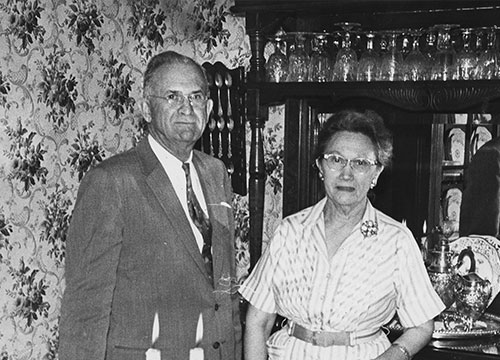
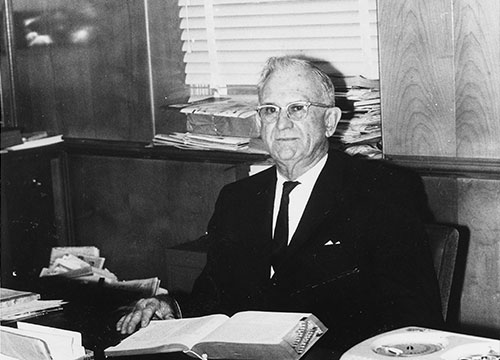
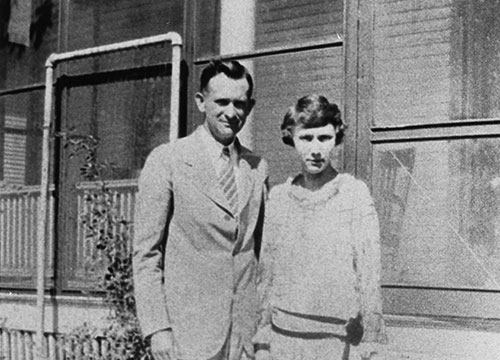
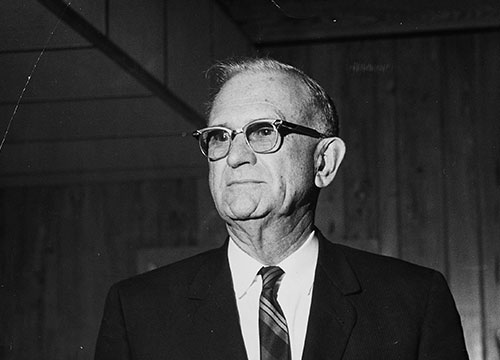
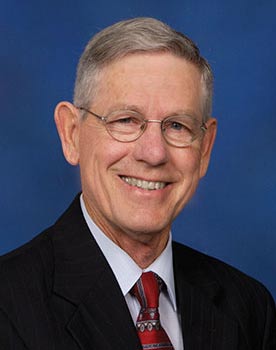
David L. Eubanks dedicated his life to Christian ministry while a student at First Christian Church in Maryville, Tennessee. A talented and bright individual, Eubanks excelled at his coursework while at Johnson Bible College (class of 1957) and was later asked to join the faculty. He completed a Ph.D. in History from the University of Tennessee in 1965, while also serving as the founding minister of Woodlawn Christian Church and as a full-time faculty member at the college. Appointed as President Bell’s successor, Dr. Eubanks served as the longest-tenured president of the college and the second-longest-tenured president of a college in the history of the United States. His term was characterized by a growth in enrollment, the procurement of regional and national accreditation, campus expansion, diversification of educational offerings, growth in the financial holdings and endowment of the school, and adaptation to changing contexts within society and the church.
Dr. Eubanks married Margaret Perry in 1955, and they had three children, David Jr., Philip, & Linnie, who grew up in the White House during Dr. Eubanks’ presidency. Mrs. Eubanks played a vital role as campus hostess, continuing the tradition of gracious hospitality to all campus guests, faculty, staff, and students.
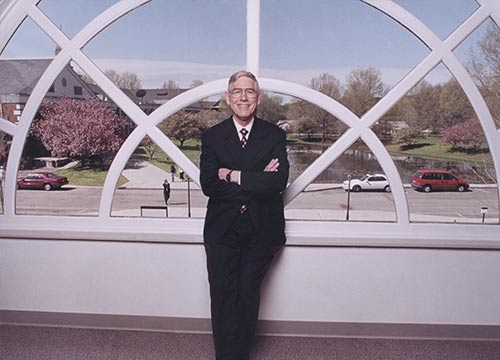
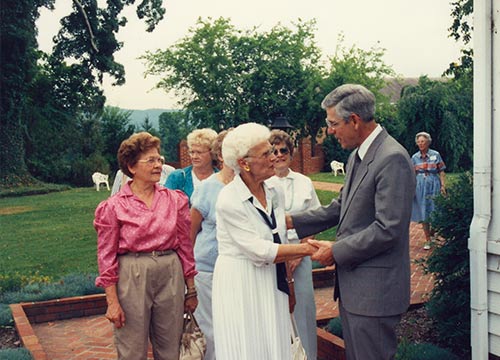
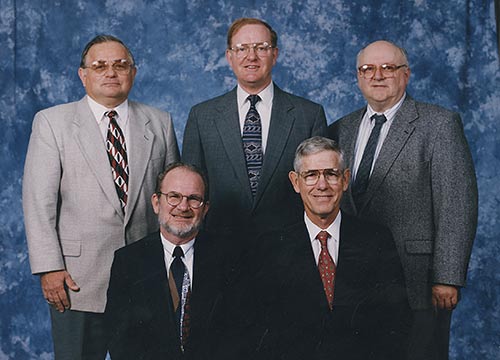
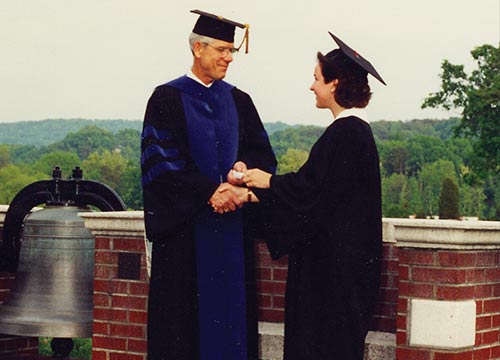
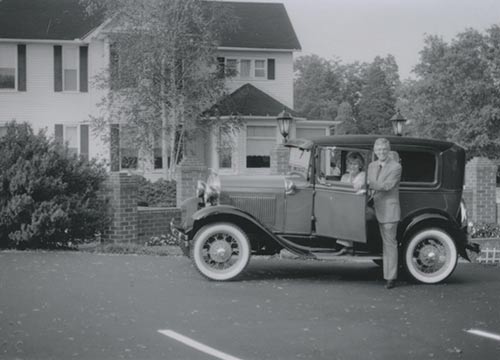
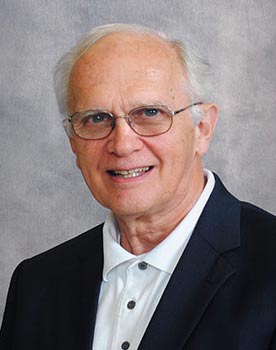
Gary E. Weedman assumed responsibility as the sixth president of Johnson Bible College in 2007. He grew up in Fairfield, Illinois, a fifth-generation Christian from the Stone-Campbell tradition, and he graduated from Johnson Bible College in 1964. Following seminary studies, Weedman graduated from Western Illinois University with an M.A. in Communication and from Indiana University with a Ph.D. in Speech Communication. In 1963, he married Janis Morgan, the daughter of Russell and Jean Morgan who served as staff members at the college for over 25 years. Dr. Weedman returned to the college as a professor from 1969-1976, the first faculty member hired by Dr. Eubanks. Dr. Weedman established himself as both a capable faculty member and academic administrator. He would go on to serve in academic administration at Lincoln Christian University, Milligan College, Palm Beach Atlantic University, and TCM International Institute.
Upon assuming the presidency of Johnson, Dr. Weedman led the University with an ambitious agenda. His tenure was marked by continued growth in enrollment, the re-articulation of the mission statement, the renaming of the institution, rapid growth in academic offerings, and the development of a full university system with online programs and multiple campuses. Dr. Weedman established Johnson University as a leading institution in Christian higher education with a global reach.
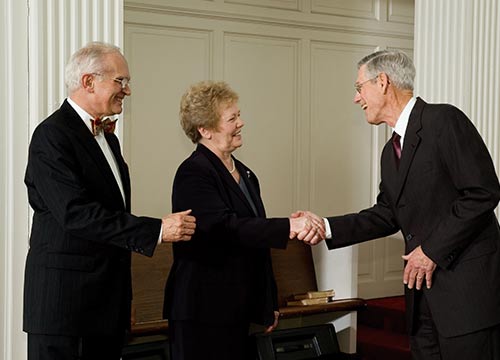
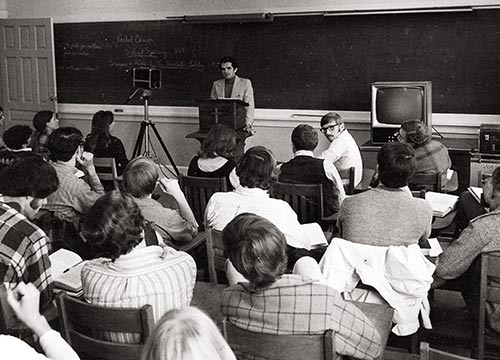
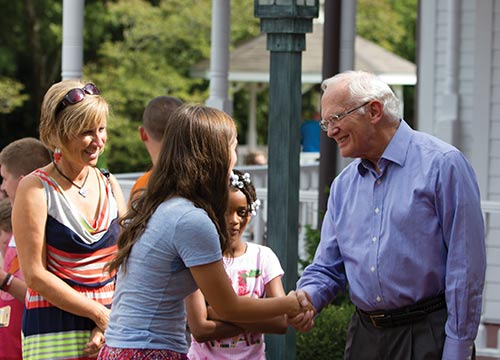
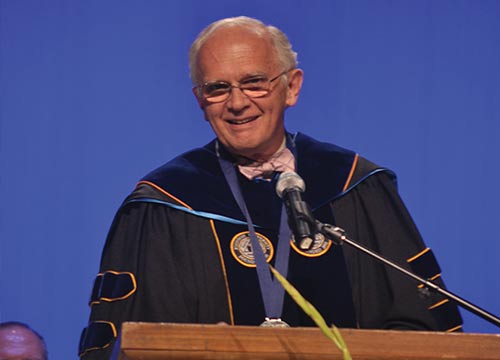
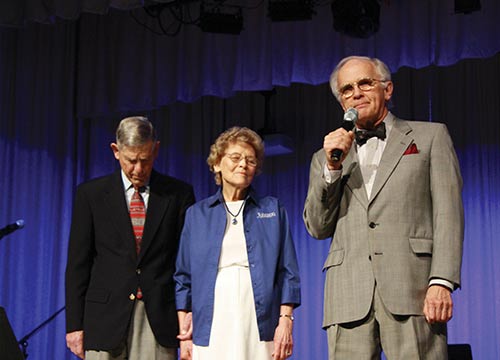
The cornerstone of the Main Building of The School of the Evangelists was laid and dedicated.
The school opened with four professors and approximately 40 students.
Johnson sold his herd of Jersey cows and invested the proceeds in a small herd of 15 Holstein cattle which became a vital part of the school’s financial stability and a means of providing educational access through work-study.
The Main Building was destroyed by a fire that started from a defective flue. Through the generous gifts of churches and friends, a new building was opened in January 1906.
Students presented a petition to President Johnson requesting a change in the name of the school from School of the Evangelists to Johnson Bible College, arguing that the institution had outgrown the name “school” and expressing a desire to honor its founders.
The first Homecoming was held on campus to celebrate the work of alumni and of the college.
Ashley Johnson died at the age of 68 and was buried on campus near the Main Building. Emma Johnson became president of the college. She was well-qualified to succeed her husband as president, having served the college as administrator, professor, and spiritual leader. She was affectionately known as “Mother in the Gospel” by students.
Emma Johnson rejected offers to formally align the school with the Christian Restoration Association and the Board of Education of Disciples of Christ. Rather than picking a side, she sought to maintain ties with both the independent and cooperative streams of the Stone-Campbell Movement—setting the school on a unique historical trajectory..
After battling cancer for a number of years, Emma Johnson died at the age of 64 and was buried beside her husband on the college campus. Her term was marked by the recruitment of new and returning faculty and the advancement of the mission of preparing poor young men to be preachers of the gospel.
Despite the onset of the Great Depression in 1929, the college was able to complete over $29,000 worth of improvements to the campus.
The junior class printed the first edition of the Johnson Junior, a student publication. Within a year, however, the students voted to rename the publication the Blue & White. This publication became the primary means of communicating between the college, its students, alumni, supporters, and friends. President Brown used the publication to build rapport and support in his early years as president.
President Brown published Standing on the Promises: The Story of Ashley S. Johnson’s Remarkable Life of Faith and Prayer.
The senior class introduced the practice of a special Thanksgiving offering by mailing letters requesting a monetary gift of $1 to the college. The students presented a total offering of $585 to President Brown on Thanksgiving that year. This tradition lives on through the fall appeal letter, which is prepared by the student body.
The college hosted a special lectureship series which included scholars, poets, prominent businessmen, politicians, university professors, and clergy from a variety of religious traditions. This series reflected the school’s dedication to a holistic educational philosophy incorporating both the liberal arts and biblical education.
Johnson Bible College presented the first honorary degrees to Edwin Errett and Walter M. White. Since then, Johnson has recognized 20 other distinguished individuals with honorary doctorates.
The students’ love for their alma mater was embodied in the words of the Johnson Hymn, written by William Tucker (Class of 1941), to the tune of Finlandia. The hymn was revised by the faculty in 1985, and then revised again by Dr. L. Thomas Smith Jr. in 2014 to acknowledge the revised mission statement and merger with Florida Christian College.
After suffering many years of heart trouble, Alva Ross Brown died at the age of 35. He was buried beside Ashley & Emma Johnson.
The Alumni Association was reorganized at the North American Christian Convention in Indianapolis, Indiana. The first major effort sponsored and completed by the Alumni Association was the construction of the Alumni Memorial Chapel in 1960-1961.
The college officially became co-educational, although a small number of female students had studied there in previous years. The total percentage of women in the student body increased from 25% in 1948 to 37% in 1968, at the end of Bell’s presidency.
The college put on the first production of Dean Floyd Clark’s “Everlasting Arms,” which had over 200 performances by Johnson students in the United States and Canada.
The first Student Council was formed on campus with the stated mission to “represent the student body in the governing of the school, and to legislate in matters for the welfare of the same.” It was renamed the Student Government Association in 2008.
The college offered its first graduate program, a Master of Theology degree, which required an additional 30 credit hours of coursework and a thesis.
The annual Homecoming and Preaching Rally moved from May to February. It continues to play an important part in the life of the University and the Alumni Association.
Because of growing regulation and the availability of government-sponsored scholarships, the work-study program became less centered around agriculture and the farm.
The Council of 70 was established to serve as an advisory committee to the Board of Trustees.
The Alumni Association presented the first annual Alumni Distinguished Service Award to H. Ancil Bourne and A. Berton Clarke. The award is presented each year during Homecoming festivities.
President Bell suffered a heart attack and subsequently died during Homecoming. Floyd Clark served as acting president until a permanent successor was announced.
The college was granted accreditation by the Accrediting Association of Bible Colleges (AABC), which would later become the Association for Biblical Higher Education (ABHE).
Wilbur and Linda Reid started the first travel team, “New Encounter,” which later became “Declaration” and laid the foundation for future travel teams.
The Class of 1976 started the annual “Preacher Grand Prix” wagon race tradition, which continues today.
The college redesigned the academic curriculum to more fully include new degree programs while continuing the Biblical Studies major.
The Teacher Education Department was founded under the leadership of Dr. Chris Templar, beginning with 12 students.
The college became one of the first two Bible colleges accredited by the Southern Association of Colleges and Schools Commission on Colleges (SACSCOC). Johnson successfully achieved reaffirmation every decade since 1985.
The first accredited graduate degree offered by the college was a Master of Arts in New Testament Exposition and Research or Preaching.
The college established an annual Preaching Emphasis Week in chapel. In 2010, the week was renamed the Fred B. Craddock Lectures on Preaching, in honor of one of Johnson’s most renowned and respected alumni.
The college celebrated its centennial anniversary, culminating in the completion of a multimillion-dollar capital campaign. As part of the centennial, the college also published Above Every Other Desire: A Centennial History of Johnson Bible College, 1893-1993 by Dr. L. Thomas Smith Jr.
Mary Lou Martin led multiple groups of Johnson students to China to work with the Camp China program. Their work initiated an on-going relationship between educational institutions in China and Johnson.
Dr. Eubanks announced his retirement and continued to represent the University as President Emeritus and as the Chief Operating Officer of Johnson University Florida from 2013-2015.
Building on the relationship established with educational institutions in China, Johnson created the Masters of Educational Technology program, which led to other academic partnerships in China.
Dr. Weedman initiated an institutional review of Johnson’s mission, and he wrote “A Third Way: Biblical Higher Education for the Twenty-First Century.” The “Third Way” identified a model rooted in the Great Commission that fit Johnson’s history, mission, and ethos.
The first annual student-led service day, K-9, began, creating more opportunities for students to engage with community organizations in various service projects.
The Board of Trustees approved a new mission statement and name change from Johnson Bible College to Johnson University. The new mission statement and name change honored the vision of its founders while also reflecting a new university status and structure.
Johnson reorganized into a university structure with eight schools and revised the Arts & Sciences core curriculum and Bible & Theology major. The University also launched Johnson University Online with the first fully online bachelor’s degree in leadership ministry and approval from SACSCOC for the online Ph.D. program in Leadership Studies.
At the invitation of Florida Christian College, the University administration began discussions regarding a potential merger/acquisition with FCC.
The merger/acquisition with Florida Christian College was approved by SACSCOC, and Florida Christian College became Johnson University Florida.
Johnson created a year-long residency program in strategic ministry that began as a partnership with Christ’s Church of the Valley in Phoenix, Arizona, and became the basis for similar residency programs in other locations.
The University established the Urban Alliance, an initiative to better engage community partners in greater Knoxville.
Dr. Weedman announced that he would retire in the summer of 2018. The Board of Trustees selected Dr. L. Thomas Smith Jr. as president-elect to succeed Dr. Weedman upon his retirement, making Dr. Smith the 7th president in the University’s history.
Johnson University celebrates its quasquicentennial (125th) anniversary.